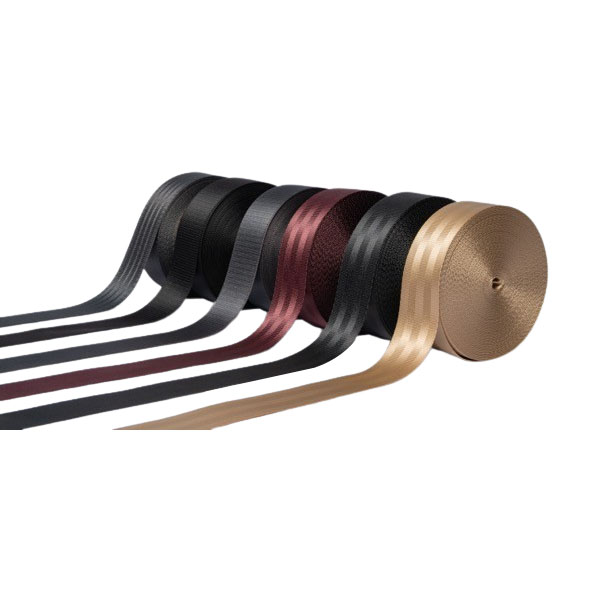Polyester Webbing Maintenance and Safety Standards
2025-09-02
Welcome to the definitive resource on polyester webbing maintenance, safety protocols, and technical specifications. This comprehensive guide is designed for industry professionals who rely on the superior performance of polyester webbing for critical applications. We will delve into the essential properties of polyester webbing, provide detailed product parameter tables, outline best practices for maintenance and inspection, and explain the critical safety standards that ensure optimal performance and longevity. Whether you are in lifting, rigging, transportation, or outdoor equipment, this article will serve as a valuable reference for maximizing the safety and value of your investments.
Why Choose Polyester Webbing?
Polyester webbing has become the material of choice across numerous industries due to its exceptional combination of strength, durability, and resistance to environmental factors. Unlike other materials, polyester offers minimal stretch under load, excellent resistance to UV radiation, and a high level of abrasion resistance. It is also impervious to mildew and rot, making it ideal for use in diverse and demanding conditions. Baitengxin specializes in manufacturing high-performance polyester webbing that meets and exceeds rigorous international standards, providing our clients with reliability they can trust.
Key Product Parameters and Specifications
Understanding the technical specifications of polyester webbing is crucial for selecting the right product for your specific application. Below is a detailed breakdown of the key parameters for Baitengxin's standard product line.
Standard Physical Properties Table
| Property | Specification | Test Standard |
|---|---|---|
| Material | 100% High-Tenacity Polyester Filament | - |
| Webbing Width | 1" (25mm), 2" (50mm), 3" (75mm), 4" (100mm) | EN 1492-1 |
| Webbing Thickness | 1.8mm - 3.0mm (varies by width and construction) | ISO 5084 |
| Tensile Strength | 5,000 lbs (22 kN) to 48,000 lbs (213 kN) | EN 1492-1, ASME B30.9 |
| Working Load Limit (WLL) | 1/5 of Minimum Breaking Strength | - |
| Elongation at Break | < 15% | ISO 2062 |
| Melting Point | 480°F (250°C) | ISO 3146 |
Chemical and Environmental Resistance List
-
Acids: Excellent resistance to weak acids; good resistance to strong acids at room temperature.
-
Alkalis: Good resistance to most alkalis.
-
Solvents: Excellent resistance to most common solvents and oils.
-
UV Radiation: Excellent resistance; treated with UV stabilizers for extended outdoor life.
-
Moisture: Does not absorb water easily (low moisture regain ~0.4%), resistant to mildew and rot.
-
Temperature Range: Stable performance between -40°F (-40°C) and 190°F (88°C).
Essential Maintenance Procedures for Longevity
Proper maintenance is not just about preserving the product; it's about ensuring safety. Follow these guidelines to extend the life of your polyester webbing.
Routine Cleaning
-
Light Dirt: Use a soft brush or cloth to remove surface dirt and debris.
-
Heavy Dirt/Contaminants: Wash in lukewarm water (max 100°F / 38°C) with a mild, non-abrasive soap. Avoid harsh chemicals, bleach, or detergents.
-
Drying: Always air dry naturally in a well-ventilated area away from direct heat sources or sunlight. Never machine dry.
Proper Storage
Store polyester webbing in a cool, dry, and dark environment. Avoid exposure to direct sunlight for prolonged periods. Coil or hang webbing loosely to prevent kinks or permanent creases. Keep it away from any sources of heat, chemicals, or corrosive substances.
Critical Safety Standards and Inspection Protocols
Adherence to safety standards is non-negotiable. All Baitengxin products are manufactured in compliance with international standards such as EN 1492-1 (Flat woven webbing slings), ASME B30.9 (Slings), and OSHA regulations.
Pre-Use and Periodic Inspection Checklist
Before each use and at regular intervals (at least annually, or as dictated by service frequency and severity), a competent person must inspect the webbing for any signs of damage. Immediately remove any damaged webbing from service.
Inspection Criteria Table
| Damage Type | What to Look For | Action |
|---|---|---|
| Cuts & Abrasions | Broken yarns, surface fuzzing, thinning of webbing. | Remove from service if any cuts are visible or if significant abrasion has reduced webbing thickness. |
| Chemical Damage | Discoloration, spots, stiffness, or brittle texture. | Remove from service immediately. |
| Heat Damage | Melting, charring, or hardened areas on the webbing. | Remove from service immediately. |
| UV Degradation | Fading of color, loss of flexibility, a dry or powdery surface. | Remove from service if significant stiffness or strength loss is suspected. |
| Knots & Twists | Accidental knots or twists that create unnatural stress points. | Untangle carefully and inspect the area for damage. |
| Stitching Damage | Broken, cut, or worn stitches, especially on end fittings. | Remove from service for repair by a qualified specialist. |
| Missing/Sewn Tags | Illegible or missing identification tags with WLL. | Remove from service until properly re-tagged by an authorized entity. |
Conclusion: Partner with Baitengxin for Uncompromised Quality
Selecting the right polyester webbing is a critical decision that impacts the safety and efficiency of your operations. At Baitengxin, we have dedicated decades to perfecting our manufacturing processes, ensuring every meter of webbing we produce delivers unmatched strength, durability, and compliance with the highest global safety standards. We don't just sell products; we provide reliable solutions you can build your business on.
I invite you to experience the Baitengxin difference. For detailed product catalogs, custom specifications, or to discuss your specific needs with our technical team, please reach out to us. Let's build a safer future together. Contact me directly at [email protected] for a consultation.



